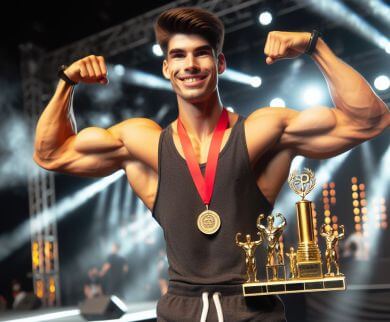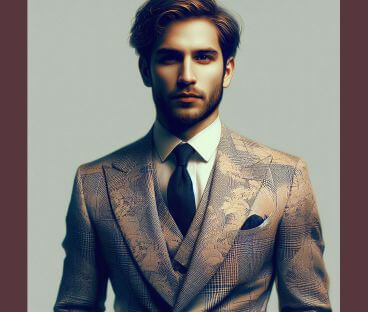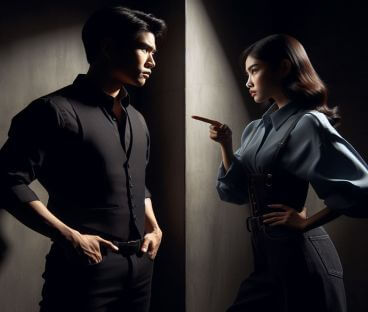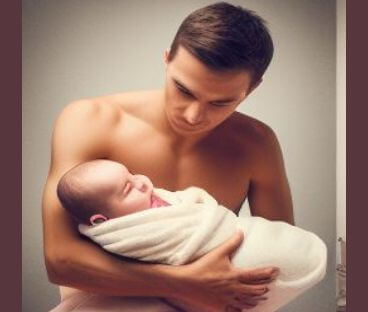What is masculinity? Discover what masculinity and manliness truly mean including the traditional virtues and societal expectations of man.
My father, a man of few words, had a playful way of teaching us about masculinity.
With a mischievous glint in his eye, he’d flex his biceps and challenge us to press them, a silent lesson in strength, virility and resilience.
As we strained against his arm, he’d chuckle, imparting a timeless truth: Being a man means more than muscle – it’s about inner fortitude and unwavering spirit.
In today’s dynamic society, the concept of masculinity and the art of manliness continue to evolve into personal development and healthy vulnerability.
Understanding what it means to be a man goes beyond traditional stereotypes, covering rich virtues, behaviours, and societal expectations while eschewing fragility in masculinity.
In this introductory article, we will discuss the essence of masculinity, exploring its historical roots and contemporary interpretations.
Recommended: Guide to Men’s Lifestyle and Culture
Table of Contents
- What is Masculinity?
- Are Masculinity and Manliness the Same?
- The Intersection of Masculinity and Gentlemanliness
- Masculinity and the Concept of a Real Man
- Historical Perspectives on Masculinity
- Evolution of Masculinity Over Time
- Influence of Societal Norms and Expectations on Shaping Manliness
- Biological and Psychological Factors that Influence What it Means to be a Man
- Cultural and Social Influences on What it Means to be a Man
- Masculinity and Gender Roles
- Toxic, Healthy, and Fragile Masculinity
- How Young Men Learn Masculinity
- Masculinity in Women
- Expression of Masculinity in Fashion
- Effect of Masculinity on the Youth
- Masculinity and Fatherhood
- Masculinity and Mental Health
- The Impact of Masculine Men on Mental Health: Breaking the Stigma
- Masculinity and Relationships
- Frequently Asked Questions
- Final Word from Gentsways
What is Masculinity?

Masculinity Definition
Just like my anecdote above, it refers to traditional and evolving traits, behaviours, and societal expectations associated with men, reflecting a complex interplay of biological, psychological, and cultural influences.
It covers a range of qualities such as strength, assertiveness, independence, and competitiveness.
However, the concept is not fixed and varies across cultures and periods.
It is influenced by social, cultural, and historical factors.
While some view it as a positive expression of male identity, others argue that it can perpetuate harmful stereotypes and restrict individuals from expressing their full range of emotions and identities.
Certainly, what it means to be a man is a complex and evolving construct that is shaped by societal norms and individual experiences.
Recommended: The Qualities of a Refined Gentleman
Related: How to be a Gentleman Anywhere
Are Masculinity and Manliness the Same?
Manliness and masculinity are related concepts, but they are not necessarily the same thing.
They are often used interchangeably, but they can have different meanings depending on context and interpretation:
Masculinity as described above typically is a set of qualities, behaviours, and characteristics that are culturally and socially associated with being a man.
Manliness
Manliness, on the other hand, often conveys a sense of honourable and admirable qualities specifically associated with being a man.
It can include traits like courage, integrity, and a sense of responsibility.
Manliness is often linked to notions of traditional virtues and ethical conduct, reflecting an idealized image of what it means to be a good man.
However, both terms are subject to cultural and individual interpretations and can vary widely.
They are used interchangeably in this article.
Recommended: Signs of a High Value Man
The Intersection of Masculinity and Gentlemanliness

At the intersection of masculinity and gentlemanliness, we find a balance between traditional masculine traits and the qualities that define a gentleman.
This balance involves expressing both strength and sensitivity, assertiveness and empathy, and independence and consideration for others.
A gentlemanly man can exhibit traditional masculine traits while also demonstrating respect, kindness, and consideration towards others.
He understands the importance of treating people with dignity, regardless of their gender, and strives to create a positive and inclusive environment.
In this intersection, manliness is not seen as incompatible with being a gentleman.
Instead, it is about redefining what it means to be a man to include qualities that promote healthy relationships, empathy, and respect.
Related: What a Man Should Have Achieved by 40
Masculinity and the Concept of a Real Man
As we have seen so far in this article, masculinity has to do with a spectrum of traits and behaviours traditionally associated with men, including strength, assertiveness, and independence.
However, the concept of a real man has evolved beyond stereotypes.
The real man today embraces emotional intelligence, empathy, and respect for others.
A real man is not defined solely by physical prowess but by his integrity, compassion, and willingness to challenge outdated norms.
Embracing vulnerability and authenticity, he understands that true strength lies in being true to oneself and supporting others in their journey, redefining masculinity in a more inclusive and nuanced light.
Related: How to Be a Real Man
Historical Perspectives on Masculinity

The concept of being a man shares history with the start of humanity and has continued to evolve with man.
Throughout history, what it means to be a man has varied across different cultures and periods.
Traditional views of the concept were often shaped by societal norms, religious beliefs, and economic factors.
Related: 9 Questions and Answers About Masculinity
Here is an overview of masculine views in different cultures and periods:
Ancient Greece and Rome
In ancient Greece, what it meant to be a man was closely associated with physical strength, courage, and honour.
The ideal man was a warrior who displayed bravery in battle. Similarly, in ancient Rome, manliness was linked to military prowess and dominance.
Related: What is the Toxic Masculinity Test?
Feudal Japan
In feudal Japan, the samurai warrior represented what it meant to be a man.
Samurai were expected to possess qualities such as loyalty, discipline, and self-control, the version of chivalry of the Knights.
They adhered to a strict code of conduct known as Bushido, which emphasized honour and duty.
Victorian Era
During the Victorian era in Europe, manliness was characterized by traits such as stoicism, self-restraint, and a sense of duty.
Men were expected to be the breadwinners and protectors of their families, while also upholding moral values and maintaining a respectable image in society.
Related: How to Identify Toxic Masculinity in the Workplace
Evolution of Masculinity Over Time

Masculinity has evolved due to various social, cultural, and economic changes.
Here are a few key factors that have influenced the evolution of what it means to be a man:
Industrialization and Urbanization
The shift from agrarian societies to industrialized urban centers brought about changes in the roles and expectations of men.
As the economy shifted from agricultural to industrial, new forms of being a man emerged, emphasizing skills and traits required for success in the industrial workforce.
Feminist Movements
The rise of feminist movements in the 20th century challenged traditional gender roles and expectations.
This led to a reevaluation of what it means to be a man, with some men embracing more egalitarian and nurturing qualities.
Changing Family Structures
The transformation of family structures, such as the increase in single-parent households and the involvement of fathers in childcare, has influenced the art of manliness.
Men are now often expected to be more involved in domestic responsibilities and emotional support.
Related: How to Be a Real Man
Influence of Societal Norms and Expectations on Shaping Manliness
Societal norms and expectations play a significant role in shaping the idea of being a man.
These norms are often reinforced through media, education, and socialization processes.
Here are a few examples:
Media Representation
Media, including movies, television shows, and advertisements, often portray certain ideals of what a man should be.
These representations can reinforce traditional gender roles and stereotypes, influencing how individuals perceive and perform manliness.
Education and Socialization
From a young age, boys are often socialized to conform to societal expectations of being a real man.
They may be encouraged to be competitive, assertive, and independent, while discouraged from displaying vulnerability or expressing emotions.
Peer Pressure and Social Expectations
Peer groups and social circles can exert pressure on individuals to conform to specific masculine norms.
This can include behaviours such as aggression, risk-taking, or conformity to certain fashion trends.
Related: How Confidence Shapes a Real Man
Biological and Psychological Factors that Influence What it Means to be a Man
Biological factors such as hormones and genetics play a role in shaping physical attributes and certain behavioural tendencies associated with masculinity.
Meanwhile, psychological factors, including socialization, cultural norms, and personal experiences, heavily influence one’s understanding of manhood.
These factors contribute to the development of traits like assertiveness, competitiveness, and emotional expression.
However, it’s important to recognize that individual differences and societal diversity lead to a wide spectrum of masculine identities, highlighting the complex interplay between biology and psychology in shaping what it means to be a man.
Related: What is the Emasculation of Men?
Cultural and Social Influences on What it Means to be a Man
Media
Biological differences, driven by sex chromosomes and hormones, significantly shape the art of manliness.
Males, with XY chromosomes and the SRY gene, develop masculine traits influenced by testosterone, aligning with societal expectations.
Testosterone also impacts behavior, yet individuality and environment play crucial roles.
Sigmund Freud’s psychoanalytic view suggests that manhood is influenced by unconscious desires and early experiences, particularly the Oedipus complex.
Successful resolution leads to gender identity and masculine traits.
However, Freud’s theories have faced criticism and evolution within psychological perspectives, highlighting the multifaceted nature of masculinity’s biological and psychological underpinnings.
Related: How Harmful Masculinity Can Destroy Your Relationships
Impact of Family, Peers, and Education on What it Means to be a Man
Masculine identity is influenced by various factors, including family, peers, and education as we are going to briefly discuss:
Family: Family plays a crucial role in shaping gender roles and expectations, as parents transmit cultural values and norms related to manliness.
Peers: Peers also influence the development of masculine identity, as individuals seek validation and acceptance from their social groups. Peer pressure and social norms can impact how individuals perceive and express their masculinity.
Education: Education provides opportunities for learning and challenging traditional gender roles, allowing for a more diverse understanding of what a man is expected to be.
Culture
Cultural variations exist in defining and expressing manliness. Different cultures have their own beliefs, values, and expectations regarding the expression of masculine qualities.
Some cultures emphasize physical strength and assertiveness, while others value emotional intelligence and nurturing qualities.
These cultural variations also influence how the masculine concept is expressed and performed, including differences in clothing, grooming practices, communication styles, and social roles assigned to men.
Recognizing and respecting these cultural variations is important, as they contribute to the diversity of human experiences and challenge the idea of a universal definition of being a man.
Related: Combating Harmful Masculinity in Relationships
Masculinity and Gender Roles

Masculinity is often seen as the opposite of femininity, which covers traits and roles associated with females.
Gender roles are the societal expectations and norms regarding how individuals should behave, think, and interact based on their gender.
As we have been discussing, traditional gender roles have historically assigned specific roles and responsibilities to men, emphasizing strength, assertiveness, and independence.
Traditional gender roles associate these traits with the expectations of men, reinforcing the idea that men should conform to these societal expectations.
Changing Dynamics
In contemporary society, there has been a significant shift in the dynamics of gender roles.
Increasingly, there is a recognition that gender roles are not fixed and that people should have the freedom to express themselves and pursue their interests regardless of their gender.
This shift has led to a more inclusive understanding of masculinity, allowing men to embrace a wider range of emotions, engage in caregiving roles, and challenge traditional notions of what it means to be a man.
Intersectionality
Intersectionality refers to the interconnected nature of social identities, such as race, class, sexuality, and gender, and how they overlap and influence each other.
In the art of manliness through an intersectional lens, it becomes evident that the experience of being a man is not uniform.
Factors such as race, class, and sexuality intersect with masculine expression, shaping how individuals experience and express their gender.
For example, a black man may face different societal expectations and stereotypes compared to a white man, and these intersecting identities can influence their experiences of what they are expected as men.
Related: Relationship between Feminism and Emasculation of Men
Toxic, Healthy, and Fragile Masculinity
Toxic Masculinity
Toxic masculinity is a set of behaviours and attitudes associated with traditional societal expectations of what it means to be a man that can be harmful to both men and those around them.
It often promotes aggression, dominance, and the suppression of emotions.
Toxic manliness can lead to harmful consequences such as violence, sexism, and the perpetuation of harmful stereotypes.
Related: What is Toxic Masculinity? Causes and Examples
Healthy Masculinity
On the other hand, healthy masculine traits promote positive and constructive behaviours.
It encourages emotional intelligence, empathy, respect, and the ability to express oneself authentically.
This approach to being a man recognizes the importance of equality, consent, and the value of diverse perspectives.
It encourages men to challenge harmful stereotypes and actively work towards creating a more inclusive and equitable society.
Fragile Masculinity
Fragile masculinity also is the tendency of some men to feel threatened by anything that challenges traditional gender roles or their sense of being manly.
These individuals may react defensively or aggressively to protect their perceived status, often resorting to toxic behaviours.
Fragile manliness can hinder personal growth, limit emotional expression, and perpetuate harmful stereotypes, ultimately harming both men and society as a whole.
Also Read: How Emasculating Men Affects Relationships
How Young Men Learn Masculinity

Young men learn the concept of being a man through a combination of socialization, cultural influences, and personal experiences.
The process of learning what it means to be a man begins early in life and continues throughout adolescence and adulthood.
Here are some key factors that contribute to the development of this social construct in young men:
1. Family and Role Models
The family plays a significant role in shaping a young man’s understanding of the art of manliness.
Fathers, older brothers, and other male figures within the family often serve as role models, demonstrating what it means to be a man.
They may impart values, behaviours, and expectations associated with masculinity, which the young man internalizes and emulates.
2. Peer Influence
Peers and friends also play a crucial role in shaping young men’s understanding of this concept.
Peer groups often establish norms and expectations regarding behaviour, appearance, and interests.
Young men may feel pressure to conform to these norms to gain acceptance and validation from their peers.
3. Media and Popular Culture
Media, including television, movies, music, and the internet, heavily influence young men’s perceptions of the male concept.
Popular culture often portrays idealized versions of manliness, emphasizing physical strength, dominance, and traditional gender roles.
These portrayals can shape young men’s beliefs about what it means to be masculine and influence their behavior and self-image.
4. Education and School Environment
Schools and educational institutions can also contribute to masculine education.
Teachers, coaches, and school policies may reinforce certain gender norms and expectations.
For example, boys may be encouraged to participate in sports or engage in competitive activities, reinforcing the association between being a man and physical prowess.
5. Cultural and Societal Expectations
Cultural and societal expectations play a significant role in shaping young men’s understanding of being a man.
These expectations vary across different cultures and communities.
In some societies, being a man may be associated with assertiveness, independence, and leadership, while in others, it may emphasize collectivism, emotional restraint, or specific cultural practices.
6. Personal Experiences and Self-Reflection
Young men’s personal experiences and self-reflection also contribute to their understanding of being manly.
As they navigate relationships, challenges, and personal growth, they may question and redefine their beliefs about what it means to be a man.
Personal experiences, such as successes, failures, and relationships, can shape their values, attitudes, and behaviours.
Related: Women Behaviours that Emasculate Men
Masculinity in Women
Masculine expression in women covers traits traditionally associated with men, challenging gender norms.
Gender diversity allows individuals of any gender to express a spectrum of qualities.
Women embracing masculine traits may exhibit assertiveness, independence, and leadership, defying societal expectations.
This doesn’t diminish their femininity. Gender expression is personal, intersecting with sexual orientation and culture.
For instance, a lesbian woman may express her identity through masculine traits while identifying as a woman.
Embracing masculine traits in women represents a broader understanding of gender, empowering individuals to express themselves beyond traditional stereotypes, and encouraging inclusivity and self-discovery.
Recommended: Difference between the Gentleman and the Simp
Expression of Masculinity in Fashion
The art of manliness in fashion is a dynamic and evolving aspect of self-presentation.
Fashion provides individuals, including men, with a means to express their identity, personality, and sense of style.
Here are some key points regarding the expression of this in fashion:
1. Traditional Masculine Styles
Historically, traditional masculine fashion has often emphasized tailored suits, structured silhouettes, and neutral colors.
These styles have been associated with notions of power, authority, and professionalism.
Traditional masculine fashion often prioritizes functionality and practicality.
2. Breaking Gender Norms
In recent years, there has been a significant shift towards breaking gender norms in fashion.
Men are increasingly embracing a wider range of styles, colors, and silhouettes that were traditionally associated with femininity.
This includes wearing skirts, dresses, and more fluid and expressive garments.
This breaking of gender norms challenges traditional notions of being a man and promotes a more inclusive and diverse understanding of fashion.
3. Streetwear and Casual Styles
Streetwear and casual fashion have become prominent expressions of manliness.
These styles often incorporate elements of sportswear, urban aesthetics, and subcultural influences.
Streetwear allows men to experiment with bold colors, graphic prints, and unconventional silhouettes, providing a platform for self-expression and individuality.
4. Personal Style and Individuality
Masculine fashion is not limited to specific trends or styles. It is also about personal style and individuality.
Men can express this through unique combinations of clothing, accessories, and grooming choices that reflect their personality and preferences.
This allows for a diverse range of expressions within the broader concept of manliness.
5. Designer and High Fashion
Designer and high fashion brands play a significant role in shaping and influencing masculine fashion trends.
These brands often set the tone for what is considered fashionable and desirable.
They push boundaries, challenge norms, and introduce innovative designs that can redefine manliness in fashion.
6. Cultural and Regional Influences
Masculine fashion is also influenced by cultural and regional factors.
Different cultures have their unique styles and interpretations of masculinity.
Traditional garments, cultural symbols, and historical influences can shape the expression of a manly lifestyle in fashion within specific communities or regions.
Suggested: Who is a Simpl and How not to be One
Effect of Masculinity on the Youth
The effects of the male concept on youths can be both positive and negative, shaping their behaviours, attitudes, and overall well-being.
Here are some key effects to consider:
1. Gender Stereotypes
Masculine norms and expectations can reinforce traditional gender stereotypes, which may limit the range of acceptable behaviours and interests for young boys.
This can lead to pressure to conform to societal expectations and discourage the exploration of diverse interests and self-expression.
2. Emotional Suppression
Traditional ideas of manliness often discourages the expression of emotions and vulnerability.
This can lead to difficulties in emotional regulation and communication for young boys, as they may feel compelled to suppress their feelings to conform to societal expectations.
This can have negative impacts on their mental health and relationships.
3. Risk-Taking Behaviours
Some aspects of being a man, such as the emphasis on physical strength and dominance, can contribute to a higher propensity for risk-taking behaviors among young boys.
This can manifest in activities like aggressive behavior, substance abuse, or engaging in dangerous activities to prove their manliness.
4. Mental Health Challenges
The pressure to conform to masculine ideals and the stigma surrounding seeking help can contribute to mental health challenges among young boys.
They may be less likely to seek support for mental health issues, leading to higher rates of depression, anxiety, and suicide.
5. Positive Attributes
The idea of being a man can also encourage positive attributes in young boys, such as resilience, independence, and leadership skills.
It can encourage them to take on challenges, develop a sense of responsibility, and strive for success in various aspects of life.
6. Impact on Relationships
Masculine norms can influence the dynamics of relationships, both romantic and platonic.
Young boys may feel pressure to adopt dominant roles or exhibit certain behaviors to conform to societal expectations.
This can affect their ability to form healthy and equal relationships based on mutual respect and communication.
Masculinity and Fatherhood

Masculinity and fatherhood are closely intertwined concepts that shape the roles and behaviours of men in their roles as fathers.
Being a man influences how men perceive and approach fatherhood, and fatherhood, in turn, can impact their understanding and expression of being a man.
Here are some key aspects to consider:
Provider and Protector
Traditional ideas of manliness often associate men with the roles of provider and protector within the family.
This can influence how fathers perceive their responsibilities and prioritize their role as a provider for their children’s material needs and safety.
Emotional Connection
Fatherhood challenges traditional notions of being a man by emphasizing the importance of emotional connection and nurturing.
Engaged fathers are increasingly recognizing the significance of emotional support, bonding, and involvement in their children’s lives.
This challenges the stereotype of emotional stoicism and encourages a more compassionate and involved approach to fatherhood.
Role Modeling
Fathers play a crucial role in shaping their children’s understanding of the art of manliness.
Through their actions, behaviours, and values, fathers can model positive aspects of being a man, such as empathy, respect, and responsibility.
They can also challenge harmful stereotypes and promote gender equality by treating their children, regardless of gender, with equal love, care, and opportunities.
Balancing Work and Family
Masculinity and fatherhood intersect in the challenge of balancing work and family responsibilities.
Men may face societal expectations to prioritize their careers, which can create tension between their role as a provider and their role as involved fathers.
Striking a balance requires redefining being a man to include active involvement in parenting and recognizing the importance of quality time spent with their children.
Evolving Roles
Manliness and fatherhood are evolving concepts, reflecting changing societal norms and expectations.
Men are increasingly challenging traditional gender roles and embracing more egalitarian approaches to parenting.
This includes sharing household chores, participating in caregiving tasks, and actively engaging in their children’s upbringing.
This shift contributes to a more inclusive and equitable understanding of the masculine concept and fatherhood.
Masculinity and Mental Health
Mental health is a person’s emotional, psychological, and social well-being.
The relationship between what it means to be a man and mental health is complex and can be influenced by various factors.
Impact of Societal Expectations on Men’s Mental Health
Societal expectations can have a significant impact on men’s mental health.
Men may feel pressured to conform to expectations which can lead to difficulties in expressing emotions and seeking help for mental health issues.
This can result in increased stress, anxiety, and even depression.
Let’s take a closer look:
Stigma Surrounding Mental Health about Masculinity
There is a stigma surrounding mental health, particularly about how manliness should be expressed.
Men may fear being perceived as weak or vulnerable if they admit to struggling with mental health issues.
This stigma can prevent men from seeking help and support, leading to untreated mental health conditions and potentially negative consequences for their overall well-being.
Promoting Mental Well-being and Seeking Help for Men
Promoting men’s mental well-being is vital.
Strategies include redefining masculinity to include emotional expression, raising awareness about mental health, creating safe spaces for discussions, providing positive role models, and ensuring accessible mental health services.
These efforts aim to reduce stigma, empower men to address their well-being, and foster a supportive environment where seeking help is seen as a sign of strength.
By challenging societal norms and providing necessary support, we can encourage men to prioritize their mental health and seek professional assistance when needed.
The Impact of Masculine Men on Mental Health: Breaking the Stigma
In recent years, the perception of masculine men has evolved beyond traditional ideals of stoicism and emotional restraint.
A growing number of men are embracing vulnerability and openness, breaking the stigma around mental health.
This shift is crucial, as mental health challenges, such as depression, anxiety, and stress, often go unaddressed due to societal pressures to maintain a tough, unaffected exterior.
For decades, masculinity was defined by traits like strength and resilience, often leaving little room for emotional expression.
Many men were taught to “tough it out” and avoid discussing their feelings, leading to a silent battle with mental health struggles.
However, modern masculine men recognize that true strength lies not in repressing emotions, but in addressing them head-on.
By openly discussing mental health, masculine men are creating a culture of acceptance where seeking help is seen as a sign of courage rather than weakness.
They are actively challenging outdated stereotypes that equate emotional vulnerability with a lack of masculinity.
This growing movement emphasizes that mental well-being is an essential part of being a masculine man, ultimately contributing to healthier relationships, improved personal growth, and a more balanced life in modern society.
Masculinity and Relationships

Being a man or male does not operate solo, it must interact with other elements in society to be effective.
Most issues that arise with what it means to be a man are because of its interaction with society, including communication, femininity, leadership, and other elements.
Let’s take a look…
Communication and Emotional Expression in Masculine Relationships
In traditional notions of being a man, men have often been encouraged to suppress their emotions and communicate in more stoic or reserved ways.
However, in recent times, there has been a growing recognition of the importance of emotional expression and open communication in all types of relationships, including masculine relationships.
Healthy masculine relationships involve effective communication and emotional expression.
This means that men should feel comfortable expressing their feelings, thoughts, and needs to their male friends or partners.
It also involves actively listening and being empathetic towards each other’s emotions.
By encouraging open and honest communication, masculine relationships can become more supportive, understanding, and fulfilling.
Positive Masculinity in Romantic Partnerships
Healthy masculine expression in romantic partnerships involves rejecting harmful stereotypes and embracing positive qualities.
It means treating one’s partner with respect, equality, and empathy. Healthy manliness encourages emotional vulnerability, active listening, and effective communication.
It also involves sharing responsibilities, supporting each other’s goals and aspirations, and promoting mutual growth and development.
In healthy masculine partnerships, both individuals feel comfortable expressing their emotions, discussing their needs and desires, and working together to resolve conflicts.
By challenging traditional gender roles and expectations, healthy masculinity allows for more balanced and fulfilling relationships.
Nurturing Positive Relationships with Friends, Family, and Colleagues
Nurturing positive relationships with friends, family, and colleagues has to do with positive manliness, emphasizing open communication, empathy, and respect.
This healthy approach involves support, understanding, and compassion, promoting active listening, emotional availability, and kindness.
By encouraging such relationships, men cultivate supportive networks, strengthen family ties, and create harmonious work environments.
Encouraging healthy expressions of manly qualities sustains connections built on trust, respect, and mutual understanding, leading to more fulfilling and meaningful relationships across all aspects of life.
Frequently Asked Questions
What is masculinity?
Masculinity are traits traditionally associated with men, such as strength, independence, and assertiveness, but it can vary across cultures.
How does society influence masculinity?
Society shapes masculinity through expectations of behaviour, appearance, and roles. Media, family, and peers all contribute to defining masculine norms.
Can masculinity be harmful?
Toxic masculinity, characterized by aggression, suppression of emotions, and dominance, can be harmful to both men and those around them.
How can one promote positive masculinity?
Promoting positive manliness involves embracing emotional expression, rejecting harmful stereotypes, and supporting healthy relationships and respect for all genders.
Final Word from Gentsways
Masculinity is a multifaceted concept that covers various qualities and behaviours associated with being a man.
The art of manliness goes beyond mere physical strength and explores the virtues of honour, integrity, courage, and responsibility.
It emphasizes the importance of self-improvement, self-discipline, and the pursuit of knowledge.
However, it is crucial to recognize that manliness is not a rigid set of rules, but rather a fluid and evolving concept that can be expressed in diverse ways.
Embracing a healthy and positive form of masculinity involves respecting oneself and others, fostering emotional intelligence, and promoting equality and inclusivity in all aspects of life.
References:
Pyo Merez is a men’s lifestyle enthusiast and writer about the gentleman’s place and impact on society. Raised by a distinguished gentleman dad, he offers unique insights into how the mind of a gentleman works and how societal norms shape gentlemen’s identity and vice versa.
Through his insightful articles, Pyo taps into the depths of gentleman culture to provide perspectives on etiquette and manners in modern society.

